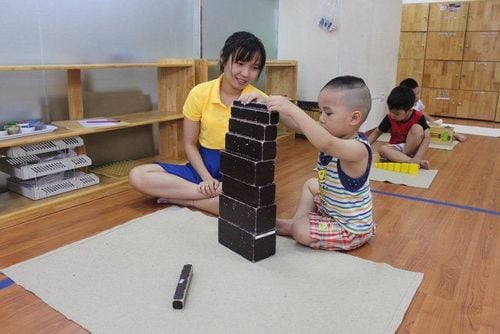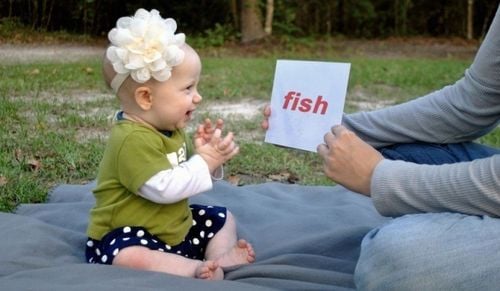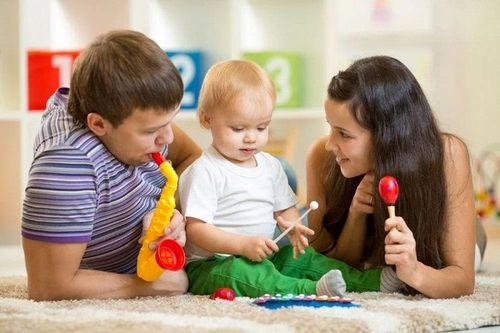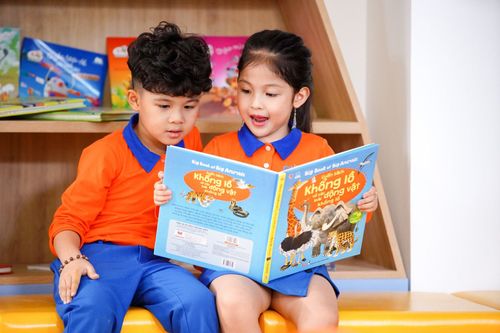This is an automatically translated article.
How children read, practically each child learns to read at his or her own pace. Learning to read in simple steps can help children strengthen their developing reading skills and instill an appreciation for books at an early age.1. How to read to children: Be patient
Have you ever worried that your child is not "naturally" learning to read? Have you seen your child seem to learn to walk, talk and next you want him to learn to read on his own? But that doesn't happen with most children.
Many parents worry about how to develop their child's reading skills. But you need to know that reading is different from walking and talking. It is not a natural or inherent skill. While the human brain is biologically wired to allow us to walk and talk, the same is not true when it comes to reading.
Humans have been able to walk and talk for at least five million years, but we only started reading about 5,000 years ago. And it's only in the last few centuries that most people have become readers. So it's natural for children to need help in the form of reading instruction.
By the age of 3 or 4, many children begin to demonstrate early literacy skills, such as listening and forming rhymes, or learning the alphabet. From there, children can begin to form early reading skills, such as associating letters with sounds, then hearing those sounds in words. Once they have mastered these skills, children can move on to putting sounds together to read words and taking them apart to spell.
Although reading involves many steps and skills, it does not have to be boring if you teach your child how to read. Reading can be made more interesting and engaging for children with games, stories and songs.
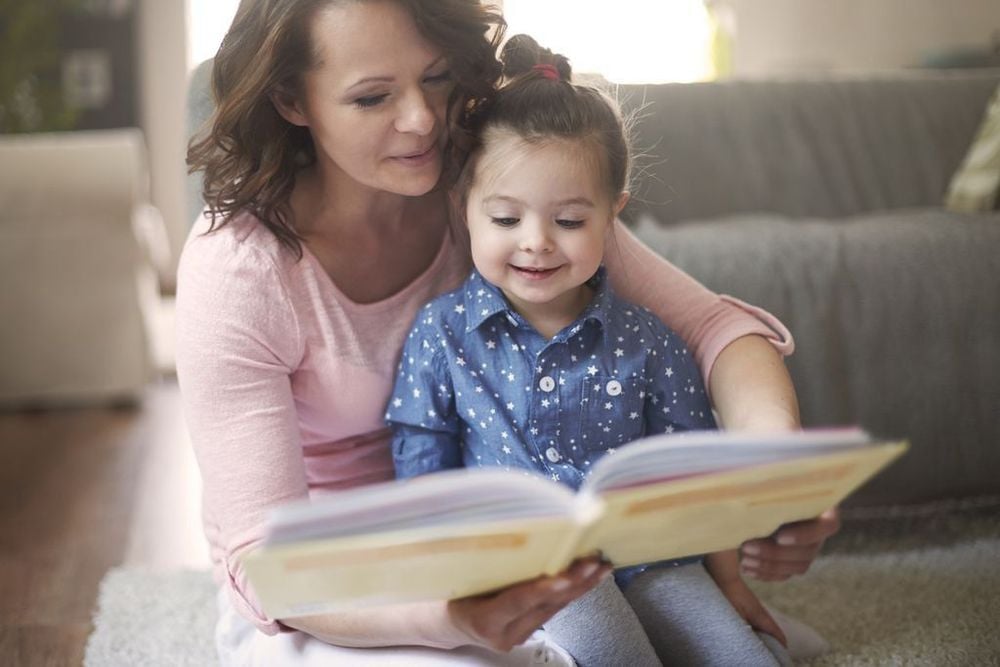
Cha mẹ hãy dành thời gian và sự kiên nhẫn để đọc sách cùng con
2. How to read to your child: Give your child time to learn how to read
Children do not need to read fluently until the end of second grade. Have you ever felt pressured to make sure your child reads on the first day of kindergarten? Rest assured, each child learns to read at his or her own pace. Some 3-year-olds can learn to read with just a little instruction, while others aren't ready to read until they're 5 or even 6.
Children before age 5 may not know the alphabet or understand that words need to be broken down into sounds in order to be decoded, but they can often recognize their own names or words like "stop". They may also begin to play with sounds, make nonsense words, listen to rhymes and try to master tongue curling, all of which are phonetic cues.
By the end of kindergarten, children usually know all the letters of the alphabet including uppercase and lowercase and can read them. Some children, with direct instruction, have also begun to decipher simple words such as "person", "sit", "jump",...
By the end of first grade, children can usually read monosyllabic words and begin to pronounce other words. By the end of second grade, many children have begun to read long, unfamiliar words. Every child is unique, so don't force them to reach these milestones. However, if you are concerned about your child's progress in learning to read, talk to your child's pediatrician or teacher.
3. How to Read to Children: Accept Repetition
Reading the same story over and over again helps children build reading skills. A lot of children, especially preschoolers, love hearing the same story read over and over again. This is completely normal and you should be happy about it.
It may seem like they are missing out on reading other stories, but when children listen to the same story over and over, they learn the rhythm and structure of language. Children who feel ownership of the story, predict what happens next, and appreciate spending time with a book have become a good friend. Repetition also helps children understand the basic structure of the story, like how plots unfold and how characters develop. It's an important first step in your child's journey to learning to read.
Read and re-read the same story over and over again. You can add some extras, along with making some difference when reading, by using silly voices or even acting out parts of the story.
Better yet, take turns "reading" the pages of the storybook. Even if your child can't read the words on the page, chances are he or she has memorized the story. You can also try misreading some sections and see if your child can spot the difference. If you really can't keep reading the same story for the hundredth time, get the help of grandparents, aunts, and uncles to reread the story to your child. That way, you get a break and the kids can still share their favorite stories with the family.

Đọc đi đọc lại cùng một cuốn truyện giúp trẻ xây dựng kỹ năng đọc
4. Share books: Reading aloud to children helps foster a love of reading in children
Read aloud to your child and let your child read aloud to you will help your child enjoy reading more. This also helps children expand their vocabulary and helps them understand story structure. It's never too early to start making reading a special part of your child's day.
Any time of the day can be used to teach children how to read: after school, before dinner, or it's the first thing in the morning. Before bed is often the best time for families, as it helps children settle in and prepare for sleep. A nighttime story, along with words of affection, can also help ease any anxiety a child may be experiencing before bedtime. One to two short books a night is a good way to start teaching your child to read. If your child is interested in long, multi-chapter books, one chapter per night may be better.
Even if your child is old enough and can read on his own, you can continue reading to your child, there is no need to stop doing this. Instead, try sharing the reading with your child: you will read a page or two and then it will be your child's turn.
Hearing read aloud helps develop a child's ability to bring a story to life. The kids can put themselves in the stories and use their imagination to create a wonderful world just for them.
For more reading time during the day, take a book with you wherever you go. That way, you can read it aloud together while waiting in line, at pick up, or waiting to start your appointment.
5. How to read to children: Don't force it
Children learn best when they discover their interests. Regardless of whether children read stories about princesses, fairy tales, ... you should encourage them to do it every day. When children read about topics that interest them, they learn to read and enjoy reading more.
An easy way to change up your child's reading list, while sticking to their favorite topics, is to mix fiction and real stories. Real books and stories help children deepen their understanding of the world around them, and this has been shown to expand their understanding.
Fiction books help children learn story structure and narrative skills, and are engaging to read. If you want to add more topics to your child's reading habits, seek advice from your local library about books that relate to topics your child enjoys.
You can also create a rotating bookshelf that has a few favorite books mixed with some new ones. That way, you gently prompt them to look for some new options without forcing them to stop reading about topics they already enjoy.
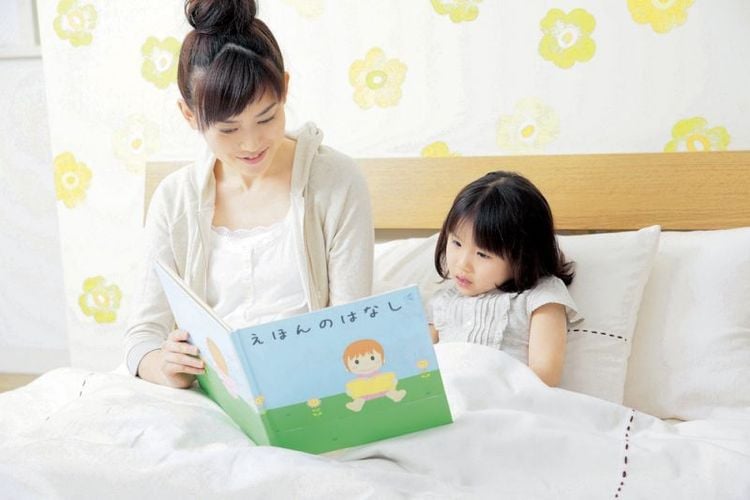
Cha mẹ hãy để con đọc sách dựa trên sự tự nguyện và không ép buộc
6. How to read to children: Share reading habits
When you read, your child will also be inspired to read. That's why taking the time to read a good book is a sign of good parenting!
Children are smart, so they can quickly figure out when they're given something "good for them" versus something just for fun. So, if you model with a positive attitude about reading, your child will begin to see reading as an enjoyable activity. When you talk about the books you're reading, you're teaching them to do the same.
Next time it rains, make yourself a cup of tea and sit down and read a good book, magazine, newspaper or e-reader, which can inspire your child to do the same. Or you can start planning family reading time, planning 15 to 30 minutes after dinner or on Saturday morning for everyone to sit down and read.
Another great way to share a love of reading with your child is to create a "wish list" together. After the meal, you can start the conversation with prompts like "I think next I want to read a story about pirates. What book would you like to read?". Then, you can take your child to buy or borrow the books on the list you wrote down earlier.
7. How to read books to children: Play with books
Children build reading skills by pretending to read their favorite books and comics. When children pretend to read, they are building the first skills on their journey to learning to read. Holding a book and turning the pages are not only fine motor skills that need to be developed, but they also demonstrate an understanding of how stories progress in order.
If the child knows how to open the book properly and use his finger to move the letters from left to right, it shows the ability to recognize print. If you notice your child is picking up a stuffed toy and having her own story time, it shows that she knows that books contain stories to share!
As children flip through the pictures and make up their own stories, they are practicing storytelling skills that not only develop their creativity but will help later when they begin to understand the structure story. This kind of pretend play should be encouraged. Delight and play are an important part of learning to read.
A great way to reinforce pretend reading is to play with your child: whenever your child pretends to read, join him and ask him to read you a story. Even babies who can't speak can "read" you a story with their expressions, gestures, and babbling. If you have an older child, you can create their classroom by raising your hand and asking a question, so that the child becomes the teacher.

Khi trẻ giả vờ đọc, trẻ đang xây dựng những kỹ năng đầu tiên trên hành trình học đọc của mình
Reading to children is a job many parents do, however, not everyone knows how to read to children? Knowing how to read to children will help children develop a love of books and form a good habit later on.
Reading is a good habit that children need to maintain regularly, but young children are always very sensitive and vulnerable, by words and actions, so parents should be patient and listen to their thoughts. think in the process of teaching children. If the family finds that the child has unusual signs for his age or has difficulty in reading comprehension, the family can go to Vinmec International General Hospital to receive help from doctors and experts. psychologists from major hospitals across the country.
Please dial HOTLINE for more information or register for an appointment HERE. Download MyVinmec app to make appointments faster and to manage your bookings easily.
Reference source: babycenter.com




